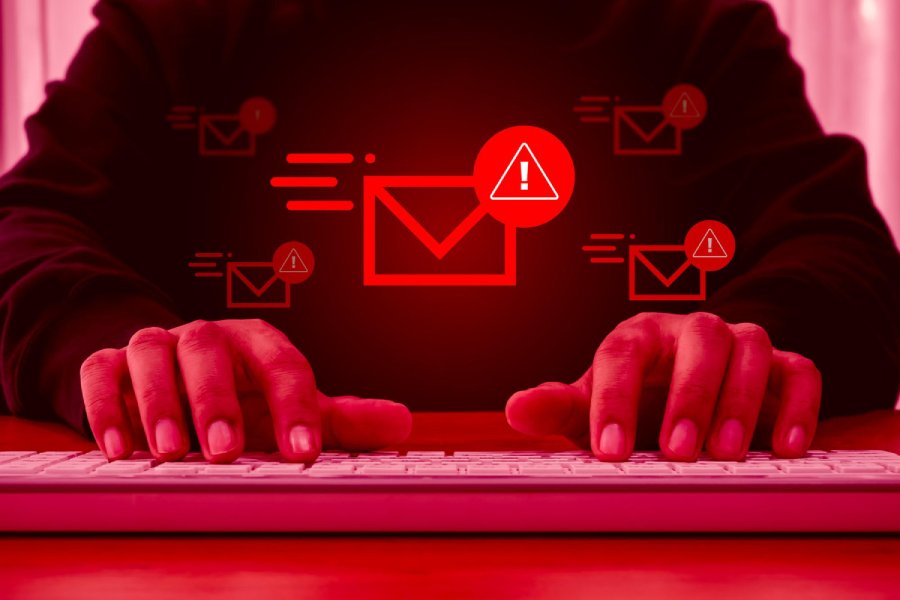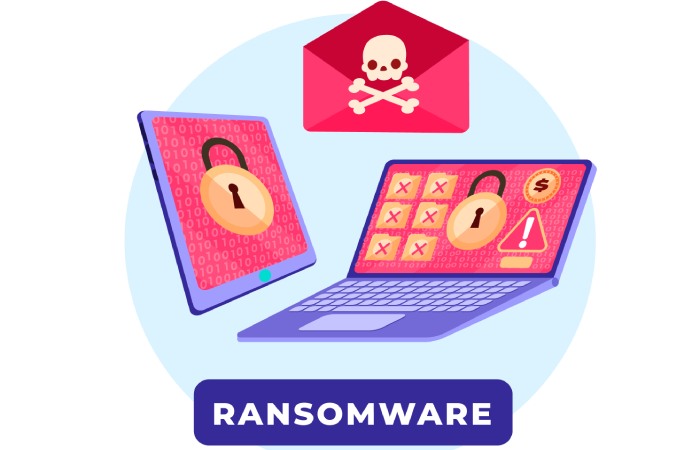With the continued evolution of technology, new and emerging email security threats are expected to arise in 2023. This article looks at the emerging email security threats in 2023 and how to protect against these.
Email security threats have been a constant concern for businesses in recent years, and the landscape is only becoming more complex. As technology advances, so do the tactics of cybercriminals, and organizations must stay ahead of the curve to protect their sensitive data. In 2023, emerging email security threats are set to cause even more havoc, and businesses must understand these risks and take steps to protect themselves. Let us see the emerging email security threats in 2023.
Sophisticated Phishing Attacks Using AI (Artificial Intelligence)
Phishing is the top cyber security concern for almost 50% of CISOs (Chief Information Security Officers) and CIOs (Chief Information Officers). With the increasing prevalence of AI in cybersecurity, cybercriminals use AI to create more sophisticated and effective phishing campaigns. These campaigns use machine learning algorithms to analyze large social media datasets and other publicly available information to craft convincing phishing emails tailored to the individual recipient.
AI-enabled phishing campaigns can mimic the writing style of the recipient, include personal details, and use the recipient’s preferred communication channels. Such personalization can make it much more difficult for individuals to spot a phishing attempt, as the email appears to be from a legitimate source. Furthermore, it is expected that phishing attacks will target MFA and services.
As per the Director of Customer Services at Vade Secure, “We’ll see more phishing campaigns that are able to circumvent MFA by acting as a proxy with the real authentication system or by tricking users who have MFA fatigue.”
How to Protect Against AI-enabled Phishing?
To mitigate this risk, your organization must implement top-tier anti-phishing solutions. These solutions are designed to identify suspicious signs of phishing emails and prevent malicious content from reaching recipients’ inboxes. By deploying anti-phishing solutions, you can significantly reduce the likelihood of employees falling prey to phishing scams and inadvertently granting hackers access to your network.
Rise in BEC (Business Email Compromise)
Email security is critical in protecting against BEC attacks, which are becoming increasingly prevalent and lucrative for cybercriminals. In fact, BEC-related losses amounted to nearly $2.4 billion in 2021, says the FBI’s Internet Crime Complaint Center.
These scams use spoofed emails that appear to come from a trustworthy source, such as an organizational executive, employee, or vendor, and typically request the recipient to transfer funds urgently. Cybercriminals employ manipulative social engineering tactics to pressure their victims into acting quickly.
While some of these emails are blatantly fake, filled with grammatical errors, and repeatedly sent to the same payroll employee, others appear legitimate and contain a plausible backstory to enhance credibility. Previously, fraudsters typically impersonated enterprise executives, but recently, there has been a shift in tactics, with mid-level employees being imitated more frequently, a trend that will rise in 2023.
How to Protect Against BEC?
To guard against BEC attacks and other email security threats, individuals and organizations should implement robust email security measures and exercise caution when handling emails, particularly those that request the transfer of funds or personal information. Regularly reviewing and updating email security protocols is also advisable to stay ahead of evolving cyber threats.
Surge in Supply Chain and Hijacking Techniques
Supply-chain attacks refer to cyber threats that infiltrate an organization’s systems by impersonating or compromising vendors with access to those systems. On the other hand, hijacking refers to attacks in which hackers use compromised accounts to join existing email communications or create new ones to deploy phishing or spear-phishing attacks.
As organizations increasingly invest in phishing awareness training to strengthen their email security defenses, the human element remains their greatest vulnerability to cyberattacks. However, this improvement in user awareness will force attackers to evolve their methods.
With users becoming more proficient at identifying and reporting common phishing scams, hackers will adjust their strategies by impersonating suppliers or customers, leading to an increase in supply-chain attacks and hijacking.
How to Protect Against Supply Chain and Hijacking Techniques?
To protect against supply chain threats and hijacking techniques in email security, organizations should conduct regular third-party vendor risk assessments to assess the security posture of vendors and suppliers with access to the organization’s systems. They should also implement 2FA to reduce the risk of account takeover, update anti-virus and anti-malware tools, and scan systems for related issues.
On the other hand, using email filtering tools that can catch spam and graymail and investing in phishing awareness training to strengthen the human element of their cyber defenses is crucial for organizations.
The Dominance of Ransomware Attacks Will Continue
Ransomware attacks are expected to be one of the emerging email security threats in 2023. These types of cyberattacks have been a prevalent threat in recent years, and they are projected to continue to evolve in sophistication and severity, making them difficult to detect and mitigate. Hackers are expected to become even more skilled at evading detection and exploiting vulnerabilities to spread ransomware.
Ransomware-as-a-Service (RaaS) is a source of revenue for cybercriminals, and it allows less-skilled hackers to access sophisticated ransomware to turn a profit. Additionally, double extortion, which involves stealing sensitive data and then threatening to leak it to gain leverage over victims, is another popular tactic among ransomware gangs.
Threat actors, especially those with less expertise, are expected to continue leveraging RaaS to gain access to sophisticated ransomware tools and make a profit.
How to Protect Against Ransomware Attacks?
Organizations should go for a multi-layered security approach that includes regular backups of essential data, employee security awareness training, and up-to-date security software. It’s necessary to have a solid incident response plan in place to detect and respond to any ransomware attacks quickly.
Organizations should also regularly review and test their security measures to ensure their effectiveness against the latest threats. Finally, it’s essential to be cautious of suspicious emails and avoid clicking on links or downloading attachments from unknown sources since ransomware is mostly dropped using phishing emails.
Organizations Will Need to Prioritize Productivity Suite Security Over Email Security in 2023
Productivity suite security integrates email security with other collaborative tools such as file-sharing applications, instant messaging, and user profiles. As organizations increasingly rely on these tools to drive productivity, productivity suite security is poised to supplant email security in 2023.
Hackers benefit from the sheer volume of daily emails, requiring organizations to triage vast amounts of data to detect threats. Integrating email security with other collaborative tools will allow organizations to detect and remediate threats from one interface, providing SMBs (Small-to-Medium-sized Businesses) and MSPs (Managed Service Providers) with a comprehensive solution that enhances productivity suite security.
API-based email security alternatives, which integrate email security with internal networks, provide comprehensive threat intelligence, and detect low-volume threats, are emerging as the future of email security. These alternatives will allow organizations to leverage information from the email to protect collaborative tools and defend against highly targeted attacks.
As a result, organizations will increasingly turn to productivity suite security to protect against email-borne threats and keep pace with hackers in 2023.
Final Words
The year 2023 brings new challenges for email security, with emerging threats such as ransomware attacks, supply chain hijacking, and phishing scams becoming more sophisticated and challenging to detect.
Businesses must proactively adopt new technologies, enhance employee training, and implement the latest security measures. With the right approach and tools, organizations can stay ahead of these emerging email security threats and continue to operate confidently in the digital age.


